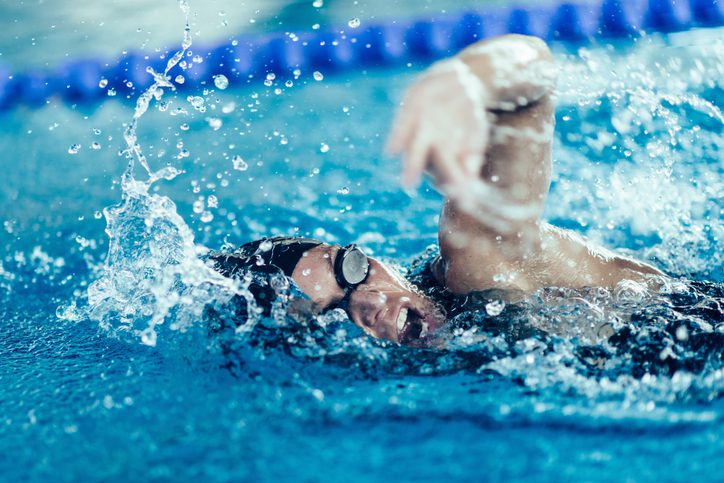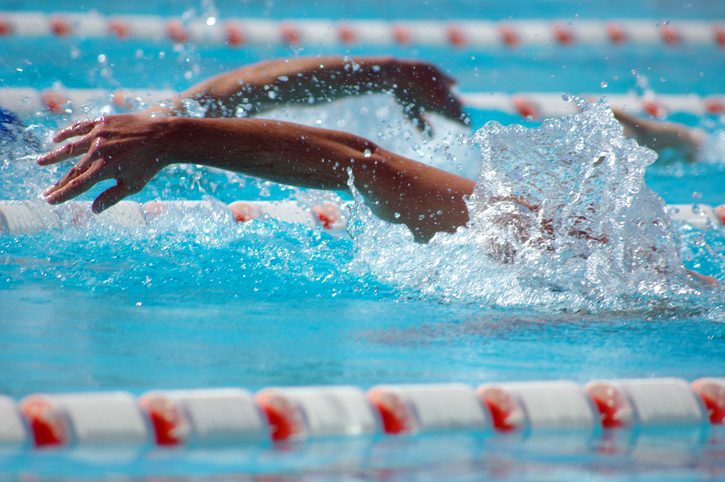Get more out of your swim workouts with these simple swim etiquette tips
Don’t talk to me, I’m swimming! How to best communicate with people in the pool

When it comes to appropriate swim workout behaviour, there are two types of triathletes – those for whom this behaviour is so deeply ingrained that they don’t even know that they know it, and those who don’t really understand how everything is supposed to flow and always feel like they’re trying to manage LA (or Toronto) highway traffic at rush hour on every lap. No matter which description fits you, if you swim in a group, read on. We’re going present some clear insights into behaviour for those in the first group, and maybe demystify (or at least build empathy for) your lane-mate’s behaviour if you are in the second group.
The first thing that we need to accept is that verbal communication between swimmers is very challenging in the pool environment. There is a lot of ambient noise, people have swim caps on, their heads are underwater, they can’t see each other’s faces to know that someone is speaking to them etc. For this reason, we want to rely on verbal communication as little as possible – especially in the middle of the set. If you try to talk to a fellow swimmer, they are more likely to end up confused about what is happening and, by the time you’ve to sorted it all out, everyone else in your lane is thrown off as well. For these reasons the vast majority of communication in the pool should be done using non-verbal cues. This is very much like when driving a car on the highway. You would never yell out your window at the car next to you to see if they would let you in to their lane (and you probably wouldn’t get the response you were looking for if you did). So don’t do it in the pool. Save the talking for after the set is over.
Since we can’t talk to each other while in the pool, we need to communicate in another way. Non-verbal communication is that way. This is done through the use of very clear and decisive positions and movements of your body. One example is the way you are facing. If you are facing the wall, you are signalling that you are not about to start swimming. If you are facing into the lane, or staring at the pace clock with your feet up on the end wall and your hand over the edge of the pool, then you are signalling that you are getting ready to start swimming. Another example is the direction your body is moving as you approach an end wall. If you approach the middle of the end wall you are signalling that you are going to keep going because we turn off the middle of the end wall. If you swim towards the corner of the end wall, near a lane rope for example, then you are signalling that you are going to stop, since we do not turn from this position. Additionally, the speed of your movement is also a signal. If you slow down as you approach an end wall, you are signalling that you are going to stop. If you speed up or keep the same speed then you are signalling that you are going to keep going. Other things, like standing with your hands on your hips (not going to swim), or having your finger hovering over the lap button on your watch (getting ready to swim) also have their own meaning.

The greatest confusion comes when people send mixed signals, for example they slow down as they swim towards the middle of the end wall. Are they getting ready to stop and take a break or are they going to turn and keep going? This is just like someone on the highway slowing down while they have their signal on to change lanes to the passing lane. Are they really passing of did they just forget to turn off their signal? These mixed signals often get sent because newer swimmers aren’t aware of the messages that their movements and body positions are sending to everyone else in the lane.
So don’t talk during the main set and be decisive in your movements to help you to avoid sending mixed signals. This will make your lane flow much more smoothly and help everyone have a better workout in the pool.
Darian Silk is a triathlon coach and Clinical Exercise Physiologist based in Toronto. Read more about Darian here or email him at darian@teamatomica.com. You can also check out his TrainingPeaks profile here.
